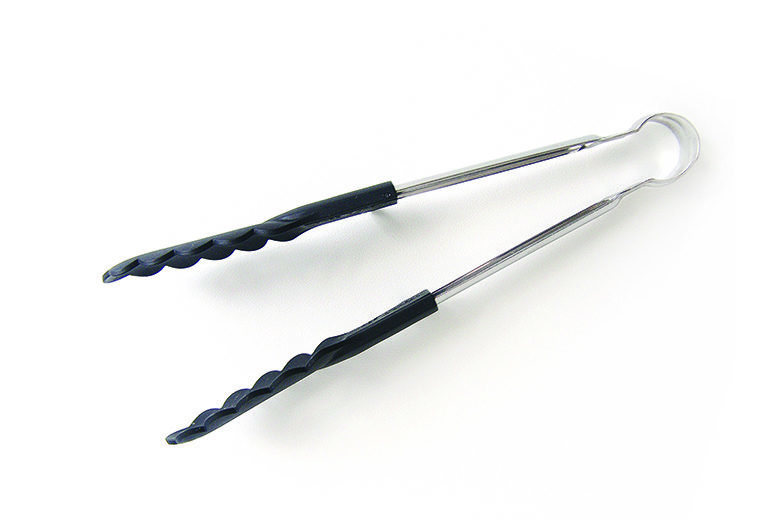
The history of tongs is murky. Their primitive design and versatile function have been around so long that a single inventor cannot be credited. But the many uses of tongs in the food space is distinct. Available in various designs, sizes and materials, tongs are an essential tool for any kitchen. From flipping and turning to serving and plating, here are some of the most common types of tongs.
Utility
Arguably the most widely used and versatile type, utility tongs are suitable for flipping or turning foods during cooking, removing cooked foods from boiling water and handling hot foods from the oven or grill. Most often, these tongs are made of metal, stainless steel or plastic with a scalloped tip for better grip. They also can come with a spring-loaded mechanism for easier use and a locking option for easy storage.
Some metal or steel utility tongs have silicone tips, which can prevent damage to cookware and provide a stronger grip when handling foods. Most utility tongs are designed to withstand high temperatures, making them ideal for handling or turning hot foods, and are dishwasher-safe. When using plastic tongs, ensure they are specifically designed to withstand high heat to prevent them from melting or burning.
Utility tongs come in a variety of sizes and lengths. Shorter tongs are best for serving and plating foods; longer tongs protect hands and arms from splattering oil or grease and high heat when grilling or cooking over an open flame.
Serving and Plating
Buffet, salad and scissor-style are three common types of serving tongs. Much like the utility design, serving tongs can be made of materials such as metal or steel, plastic, wood and bamboo.
Buffet tongs often have a triangular or scalloped tip, making it easier to pick up and serve different types of foods. Most salad tongs have both a fork tip and a spoon tip to efficiently transfer and serve delicate greens or mixed salads.
As their name implies, scissor-style tongs use a pivoting motion similar to scissors to open and close the arms. Scissor tongs have paddle-shaped tips that better grip bulky items such as baked potatoes or corn on the cob.
Serving tongs also have specific purposes, such as placing ice cubes in drinks, transferring slippery noodles and food styling at fine dining restaurants or photography shoots. Bamboo or wooden tongs are used to safely retrieve bread from a toaster oven or pop-up toaster.
Because they have different uses, serving tongs are made from materials that can withstand both hot and cold temperatures. Most are dishwasher-safe, unless they are designed to be disposable, recyclable or compostable.
When tongs are damaged or no longer function, they should be discarded or recycled. Most stainless-steel and metal tongs can be recycled as scrap metal after removing all silicone or plastic parts. Tongs made of wood or bamboo can be composted but should be taken to a facility for processing instead of composting them at home. Most traditional and disposable plastic tongs cannot be recycled, but they can be washed and reused until they become worn or damaged.
References
Granger T. How to Recycle Your Old Cookware. Earth911 website. Published October 11, 2010. Accessed June 5, 2019.
Kitchen Tongs. CooksInfo website. Accessed March 24, 2019.
Serving Tongs. WebstaurantStore website. Accessed March 23, 2019.
Tong Buyers’ Guide. Katom Restaurant Supply Inc. website. Accessed March 21, 2019.
Utility Tongs. WebstaurantStore website. Accessed March 23, 2019.
Winco UTS-9K Non-Slip Silicone Tip Utility Tong”. TigerChef website. Accessed March 22, 2019.








